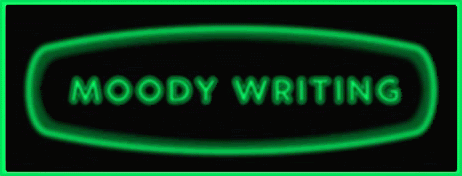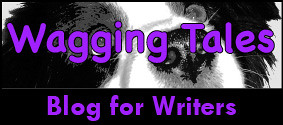The general advice about writing dialogue tends to follow the same basic precepts. Conflict, goals, move the plot forward, don’t waste time with chit-chat, etc. That is certainly all useful stuff and will help keep the story moving.
But there’s more to dialogue than just getting across information.
People loves great dialogue. In books, in plays, in movies. In real life. Sparkling conversation holds the attention, even when it has nothing to do with anything. People like hearing it. It’s enjoyable to read. But it’s very difficult to write.
Sometimes, a memorable line is designed to be so. Everything builds up to it. A character gets teed up to say the thing that will define the rest of their life, and wham: Frankly my dear, I don’t give a damn. Beautiful. AFI’s most memorable quote of all time.
Sometimes, though, it is not quite as clear why a line enters the collective consciousness. These aren’t the droids you’re looking for. Who would have thought that would be the most enduring line from Star Wars?
Which is the thing about dialogue. It’s all about the context.
It is entirely possible to have a bunch of people gathered together just chatting, and for it to be entertaining. But those writers who excel at that sort of thing, whether it be Tarantino or Oscar Wilde, do more than just collect a bunch of witty epigrams.
You can’t have everyone sound the same (even though in real life friends often have similar preoccupations). A roomful of acid-tongued raconteurs would get very tiring to read. For every manic Joker you need a taciturn Batman.
Also, there’s only a limited amount of time you can maintain a conversation for its own sake. It may seem like people are just chatting, but there’s always an end point they’re working towards. As a reader you don’t see it till you get there. As a writer, you have to know what it is so you can aim for it (although it may take a few drafts before you figure it out).
And then there’s the wider context. There’s always a story going on around the people talking, even if they aren’t participating in it at the moment. Characters don’t inhabit a vacuum. A simple contrast between what Mike says to Jane at dinner (I love your potato and leek soup) and what he later says to Darren in a diner (I’ll have anything but the soup. Can’t stand the stuff.) creates additional meaning out of very simple language.
In the way other people’s conversations are of interest to no one but them, characters in a story have to do more than behave realistically to be of interest to a reader.
The thing is though, you have probably read stories where people seem to be having a very mundane conversation, and yet it’s fascinating. You know this because you were fascinated by it. You didn’t get bored or annoyed, you just kept reading. Yet when you write a similar scene, one that reflects real life, that investigates the mundane, or is a moment of normality before the storm, readers react negatively. Why? What are you doing differently to the stuff you’ve read?
The problem is subtext. In good writing it’s invisible, but it’s there and it has an effect, even though you can’t see it. And subtext is dialogue means there’s more going on than at first appears. This can be achieved in various ways, through context, through wording, through phrasing. Lying, joking, coercing, threatening; these are all different ways for characters to present themselves through what they say. And they can all be used poorly.
Consider:
“Give me the money or I’ll kill you.”
Compared to:
“Give me the apple or I’ll kill you.”
The first line would seem to be dynamic and action-packed. But it’s fairly dull and predictable. The second version is much more attention grabbing because people don’t normally fight over apples, so the reader wants to know what’s really going on.
When people say what they mean, when they say things that have no other meaning apart from the obvious, dialogue falls flat.
When you write a scene you should know :
Who are these people?
Where are they?
Why are they here?
What mood are they in?
What do they want?
These are the things that will help the dialogue be more than random chit-chat. None of the answers need to be hugely momentous, but if the answers to most of these questions is non-specific, if it doesn’t really matter, chances are the scene will not be very interesting.
That isn’t always the case.
Like an overheard conversation where you have no idea about the specifics, but you’re still captivated, really good dialogue can transcend all of the above. But you have to be a very skilled dialogist to pull that off. And like an overheard conversations that turns out to be utterly engrossing, it’s possible, but it’s very rare.
If you found this post interesting please give it a retweet. Cheers.
That's the last in the series of 'What do you love...' posts (should have really held them back for Valentine's Day). Thursday's post will be a new Chapter One Dissection of The Night Circus by Erin Morgenstern. Hope you'll drop by for that.








































































































20 comments:
Excellent tips as always, Moody!
I completely agree. My dialogue moves the conflict and plot, but in different ways/ It can be playful banter, a tense situation, or even a bit rude and crude. Dialogue helps set the mood and an author needs to be skillful while not becoming too frugal in their verbage.
This advice you wrote applies equally to all writers: A roomful of acid-tongued raconteurs would get very tiring to read. For every manic Joker you need a taciturn Batman.
Your discussion about saying what you mean reminded me of a tweet I received today:
A toast: Not 2 worry when someone says:"break a leg" & "knock 'em dead," which, of course, means "good luck," instead.
Great reminders. As I'm in the process of revisions, this is perfect for me to make sure my dialogue is spot on. Thanks!
Great post as always. Whenever I read our blog I find myself going back over the post to make sure I digested it all. You provide such useful ideas and pointers.
@Alex-thanks.
@Stephen-I think it's the endless variety that makes it such a great part of a story.
@Gail-if we could make dialogue on the page as complex as the stuff we say everyday, job done.
@Julie-you're welcome.
@Melissa-glad to be of some help.
Awesome tips!
I do try to make my dialogue actively do something for the either the plot or character development. But yes, sometimes you just gotta let the characters just be inanely "real". Sometimes :)
Yep, my goal is to have something I write become a new fad saying. Can you imagine 100 years from now some writer writing a "historical" and trying to get the phrase just right?
........dhole
I'm not here as often as I should be, bur every single post of yours is so incredibly insightful. Well done! And thanks for sharing the wisdom.
Some of my characters tend to tell strategic split-truths and behave in calculated ways, so it's really important to keep what they say within the context of what they are doing to get the whole truth.
It's so true what you say about dialogue needing a certain balance. Two acid-tongued speakers is too much. Your posts are always a great read!
Fantastic advice here... and so hard to implement. I'll keep working at it!
Writing dialogue is my favorite part. So far, I haven't written any scenes where the characters are simply chatting. There's always a point (and it's typically urgent,) and I make sure to get to it fairly quickly and with as much tension as possible/necessary.
It's so true that the characters must have totally different voices and the conversation must be balanced to maintain interest, but I think it must also feel very real. Not conversational real, but get-to-the-point real, spoken in a true human fashion with as few tags as possible and with the occasional break for incidental action to mark emotion without having to tell what that emotion is.
Awesomely informative post, as always!!
Some writers that I've been trying to help edit are terrible with dialogue tags. I keep telling them, "Stop this. It's talking heads. I don't know who's talking here." I need to direct them to this post.
@Christine-thanks.
@Donna-I'd be happy just getting something published at this point.
@Rusty-you're welcome to drop by whenever you have the time.
@Lynette-some people just can't be trusted.
@Lydia-cheers.
@KO-I'll keep trying too.
@Nancy-I think there's various ways you can do it, it just has to be interesting.
@Michael-Mooderino University is always open.
Great post, as always!
I'm reading a book that I'm not getting into as much as I would like (I'm not connecting with the main character). Why am I still reading it? Well I paid for it, and because the dialogue of one the characters cracks me up.
Great point about subtext--it's difficult, but definitely adds to the writing.
Good luck with the A to Z Challenge. I look forward to your posts.
@Stina-I think readers read books for different reasons to the ones publishers and agents insist on.
@Golden Eagle-I think it comes a lot easier if yoiu have people with things to say.
@Armchair Squid-same here. This year I'm planning ahead. So far I've written my post for A. Only 25 to go.
I just left a comment that looks like it disappeared. Oh well, I'll just leave it at I like good dialog.
Lee
the A to Z Challenge April 2012
Twitter: @AprilA2Z
#atozchallenge